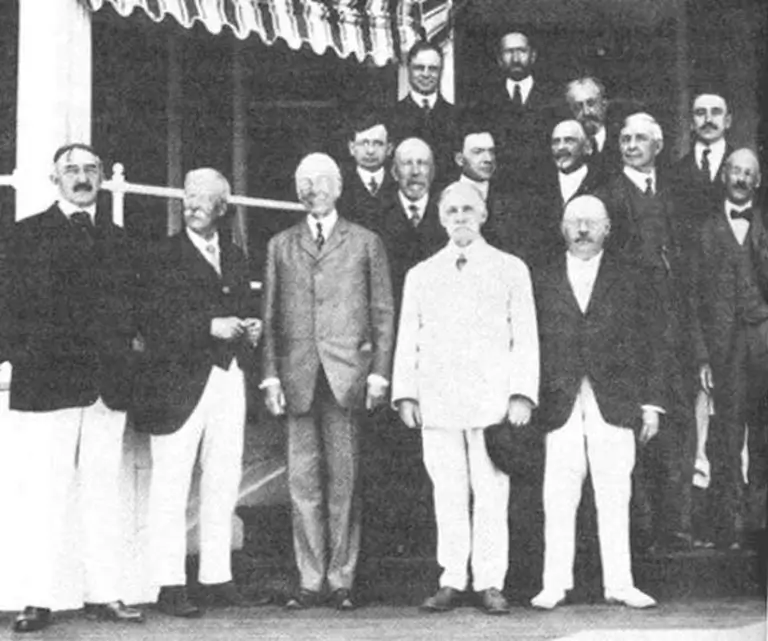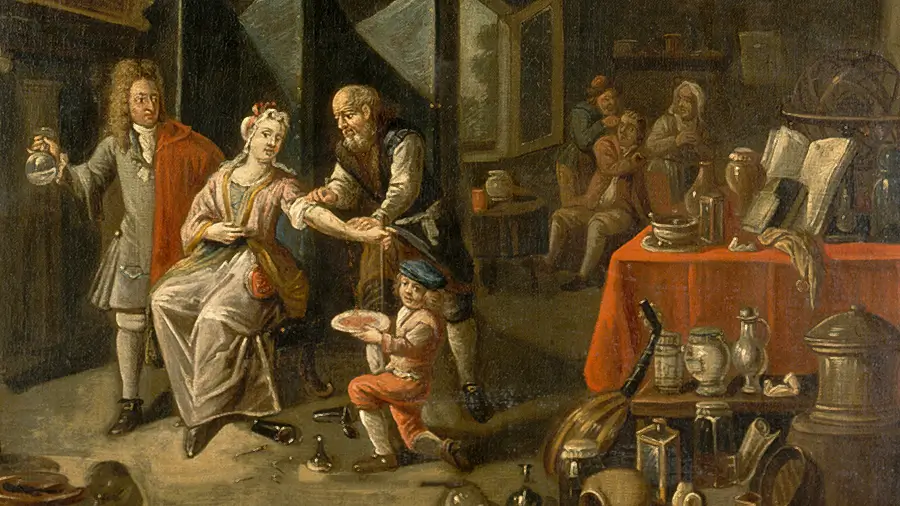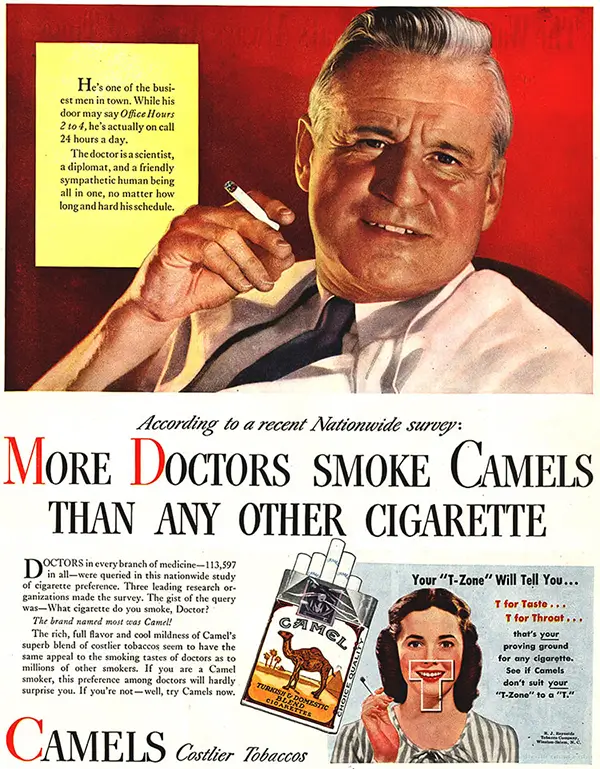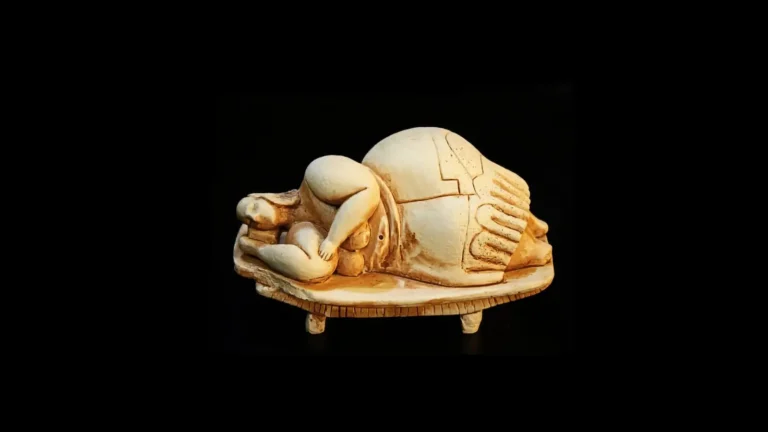Allopathic Medicine- The Rise of an Industry
The balance of medical branches remained equal to about the turn of the 20th century when new medical treatments emerged that were potentially very profitable.
Milos Pokimica
Written By: Milos Pokimica
Medically Reviewed by: Dr. Xiùying Wáng, M.D.
Updated June 9, 2023Around 100 years ago modern allopathic medicine was finally able to neutralize so-called empirical doctors or holistic or natural healers. They were called empirical because they have been utilizing only empirical observation without any form of science. Knowledge was carried down from one generation to another in the form of natural herbal and another form of folk medicine. In the 1800s society was split between two forms of medicine and there was the regulation of both forms with laws and restrictions equally. Patients had a choice of using both forms of treatment, the allopaths, and the empirics. The allopathic (modern) doctors called their approach heroic medicine and believed in the use of poisons to aggressively treat diseases. They called their practice scientific theory. They used three main techniques.
- They bled the body to drain out the bad toxins like in the middle ages. During the plague of the middle ages, treating practice was to cut open the veins leading to the heart. This, in their mind, should allow the disease to leave the body. The swellings associated with the Black Death also were cut open to allow the disease to leave. They continued to use this form of practice.
- Then they give huge doses of toxic heavy metals like mercury which lead to displacing the original disease.
- They also used surgery which was the best method of them all. They scientifically studied human anatomy and believed in the same principle of aggressively treating diseases by cutting them out.
Empirical doctors believed in the natural human body’s potential for self-healing and did not use any form of surgery. They did not even allow for the piercing of the human skin in any form. So they never practiced surgery. At that time that was a brutal method without anesthetics and infection control. Even bad teeth were life-treating and painful removal procedures without antibiotics. Allopaths did that surgery too. At that time most patients feared allopathic methods altogether and on not-so-rare occasions, patients did die from the cure. Empiric healers contrary to the doctors believed in stimulating the body’s defenses to heal itself instead. They used vegetable products, herbs, and nontoxic substances in small quantities too. Usually, if treatment was not successful, they did not aggravate the state of the disease, and if the patient did die, he died from the disease itself not the cure like mercury or bleeding.
The balance and coexistence of both medical branches remained equal until about the turn of the century when new medical treatments emerged that were potentially very profitable.
The American Medical Association was joined and influenced by strong financial and controlling forces and transformed medicine into an industry. International banking cartels or in personal names Rockefeller, Morgan, and Carnegie financed surgery, radiation, and synthetic drugs. Carnegie at a later time sold out all of his businesses to Morgan and became a philanthropist. Rockefeller and Morgan were some of the founders and stockholders of the Federal Reserve (a private bank that still controls the US and global economy to large extent) and were also heavy industry and oil industry monopolists. They were to become the business foundations of the new medical industry.
A takeover of the medical schools allowed for a takeover of the entire medical industry. Carnegie, in particular, came into the picture and said that he would put finances. They invested tremendous amounts of money into the founding of the new industry, in particular into the schools that were complacent about cooperating with them. For the money, they spent they had a request to put some of their people on a board of directors to see that their money is spent wisely. What happens was that all of the major universities received large grants from these people and also accepted one or more of these people on the board of directors. Now, they were not there to spread science and learning in pursuit of social well-being and human happiness. They were put there as a larger scheme of plans to ensure the interest of the bankers. Almost overnight schools were taken over. The schools did get large amounts of money, and they did spend it on new expensive equipment and built new buildings and new laboratories, and hired more researchers and teachers. However, at the same time, they sold their interest to the growing industry called medicine dominated by newly founded pharmaceutical companies. Physicians from that time onward in history would be taught pharmaceutical drugs and allopathic forms of interventional medicine for the benefit of the private financial interest of the international banking cartel led by Rockefellers and Morgan.

In the picture, you can see trustees of the General Educational Board, the first Rockefeller Foundation at a retreat in Rockland, Maine, in July 1915. Besides Rockefeller, in the middle, you can also see for instance Charles W. Eliot (former president of Harvard University), Harry Pratt Judson (President of the University of Chicago), and many other “important” individuals that just by meeting in the such arrangement have created something known as a conflict of interest.
It is amazing how little money took to do it. By that time surgery became a more important aspect of allopathic medicine because of anesthesia and infection control and doctors advocated more and more the use and research into expensive operations as a cure for every disease where it can be implemented. Then the large and lucrative hospital system was constructed and radium fever swept medicine. The price of radium rose 1000% overnight. The drug industry grew from booming patented medicine. The schools changed education standards and licensing regulations to exclude empirics. Only AMA-approved doctors could legally practice medicine. The media campaign was launched to spread fear and associate empirics with quacks and danger. From that time and to this day schools of medicine represent an interest of the banking cartel and not the interest of individuals.
Unfortunately, the medical “industry” and the government also has been taken over by special interests and that is the same situation to this day. Ans it was really simple. First Rockefeller, Morgan, and Carnegie gained control of the teaching system. Then they gave AMA the power to exclude all of the empirics and doctors who do not like from practicing. Then took over the entire drug testing process by heavily influencing medical publication that reviews those drugs and has control of the regular media. Finally, they extended their control over FDA that supposed to verify those drugs’ safety and efficacy.
The average doctor in medical school today gets a great education, he knows a lot about drugs and surgery, but he does not know one damn thing about nutrition. And he has learned to associate nutrition with quackery and to keep his mouth shut and go with industry guidelines for fear of losing his six-figure salary. He has learned that the only thing that matters is what the big book from which he learns in school told him because that is science and everything else is evil. The average doctor is in the same mindset as someone that has been indoctrinated into a religious cult. He had a fear of death if he starts to think outside of the industry guidelines literary.
There exists a high probability that he will lose his job by trying to help people. Then he is going to lose his house and then he is not going to be able to pay his student loan. Even if he knows what is going on eventually, he will accept the system and will defend it. He will give a Hippocratic oath, but he is not a real empiric doctor as Hippocrates himself was. For example, Hippocrates had forbidden his students to pierce human skin on all occasions. Doctors of today all the complete opposite. They will even consciously do you harm if that is what they were told to do. At the bare minimum, they will just be indifferent.
Even to this day, doctors are targeted for telling the truth. They learn in college to keep their mouth shut. Dr. John McDougall’s story was a good example (https://www.drmcdougall.com/). He was almost thrown out of medical school on a couple of occasions because he had a hard time keeping his mouth shut. Then he was almost thrown out of residency when he lost his cool after seeing one patient who had his third heart attack. He told the patient that he does not have a bright future if he does not shift to a starch-based diet of fruits and vegetables. His chief of Medicine called him in for a chat and told him that he embarrassed his attending doctor by talking about food and that he should never do that again if he needs to hold any job in the future. So he shut up for a while, and after he got his “ticket” the chief of Medicine for the residency University of Hawaii Dr. Schatz called him in again, and he said:
“You know McDougall, I like you. I like your wife and your children. I think you have a great family, but I am afraid you are going to starve to death with your crazy ideas about a vegetarian diet. You are not going to work anywhere, and the only patient you will ever collect are a bunch of bums and hippies.”
This is the same way that any form of organized crime functions thru different forms of intimidation toward your family. McDougall told him he had a big fat abdomen but that he has to look himself in the mirror and that he will not treat chronic diseases with drugs and surgery. For people who do not know today open heart surgery cost is: $324,000. You just cannot make that kind of profit with the selling of sweet potatoes. McDougall’s problem was that he was raised in a poor American family where the highest principles were honesty, so he probably did not fit well in the medical industry. Fortunately, he was not that big to become a real target, so he lived a full life. He later wrote the book named The Starch Solution .
I just use his situation as an example of the functioning of the entire system. Industry targets systematically every conceivable threat with no exception. This was 1978, and to this day the situation is the same. McDougall even gets kicked out of the Obesity Medicine Conference in San Francisco in 2016. He was asked to talk at the conference but the medical conference people required all the speakers to submit the slides and videos for approval. Initially, they thought that his approach was based on the Mediterranean diet but when they realized that it is not the Mediterranean diet they thought that it was, the full meat, alcohol, and cheese false Mediterranean diet and that instead, it was really poor people low-fat vegan starch-based diet (Mediterranean diet- “Wonder” of olive oil). They uninvited him with the excuse that he is not willing to be “politically correct”. He also got a law passed in 2011. He testified before the Senate Committee on the need to educate medical students on human nutrition. The bill was SB 380 Continuing medical education. It was passed in California Congress, and it was signed by Governor so it became the law in California to force the 11 medical schools too must teach nutrition to medical students. However, the medical industry does not have an interest in healing people, so the implementation of the law was given to the Medical Board in California.
They fulfill the law by putting one paragraph in their newsletter once a year about nutrition.
References:
Passages selected from a book: Pokimica, Milos. Go Vegan? Review of Science Part 2. Kindle ed., Amazon, 2018.
Related Posts
Do you have any questions about nutrition and health?
I would love to hear from you and answer them in my next post. I appreciate your input and opinion and I look forward to hearing from you soon. I also invite you to follow us on Facebook, Instagram, and Pinterest for more diet, nutrition, and health content. You can leave a comment there and connect with other health enthusiasts, share your tips and experiences, and get support and encouragement from our team and community.
I hope that this post was informative and enjoyable for you and that you are prepared to apply the insights you learned. If you found this post helpful, please share it with your friends and family who might also benefit from it. You never know who might need some guidance and support on their health journey.
– You Might Also Like –

Learn About Nutrition
Milos Pokimica is a doctor of natural medicine, clinical nutritionist, medical health and nutrition writer, and nutritional science advisor. Author of the book series Go Vegan? Review of Science, he also operates the natural health website GoVeganWay.com
Medical Disclaimer
GoVeganWay.com brings you reviews of the latest nutrition and health-related research. The information provided represents the personal opinion of the author and is not intended nor implied to be a substitute for professional medical advice, diagnosis, or treatment. The information provided is for informational purposes only and is not intended to serve as a substitute for the consultation, diagnosis, and/or medical treatment of a qualified physician or healthcare provider.NEVER DISREGARD PROFESSIONAL MEDICAL ADVICE OR DELAY SEEKING MEDICAL TREATMENT BECAUSE OF SOMETHING YOU HAVE READ ON OR ACCESSED THROUGH GoVeganWay.com
NEVER APPLY ANY LIFESTYLE CHANGES OR ANY CHANGES AT ALL AS A CONSEQUENCE OF SOMETHING YOU HAVE READ IN GoVeganWay.com BEFORE CONSULTING LICENCED MEDICAL PRACTITIONER.
In the event of a medical emergency, call a doctor or 911 immediately. GoVeganWay.com does not recommend or endorse any specific groups, organizations, tests, physicians, products, procedures, opinions, or other information that may be mentioned inside.
Editor Picks –
Milos Pokimica is a health and nutrition writer and nutritional science advisor. Author of the book series Go Vegan? Review of Science, he also operates the natural health website GoVeganWay.com
Latest Articles –
Top Health News — ScienceDaily
- Why consciousness exists at allon December 15, 2025
Consciousness evolved in stages, starting with basic survival responses like pain and alarm, then expanding into focused awareness and self-reflection. These layers help organisms avoid danger, learn from the environment, and coordinate socially. Surprisingly, birds show many of these same traits, from subjective perception to basic self-awareness. This suggests consciousness is far older and more widespread than once believed.
- AI found a way to stop a virus before it enters cellson December 15, 2025
Researchers discovered a hidden molecular “switch” that herpes viruses rely on to invade cells. By combining AI, simulations, and lab experiments, they identified and altered a single amino acid that shut down viral entry. What once might have taken years was achieved far faster using computational tools. The findings open new possibilities for designing future antiviral treatments.
- New study shows some plant-based diets may raise heart disease riskon December 15, 2025
Researchers tracking over 63,000 adults found that high-quality, minimally processed plant foods significantly reduce cardiovascular risk. But when those plant foods are ultra-processed, the advantage disappears—and can even backfire. Some ultra-processed plant diets increased risk by 40%. The study urges a shift toward whole, naturally nutrient-rich plant foods.
- These simple habits could make your brain 8 years younger, study findson December 15, 2025
New research shows that your brain’s “true age” can shift dramatically depending on how you live, with optimism, restorative sleep, stress management, and strong social support acting like powerful anti-aging tools. Using advanced MRI-based brain-age estimates, scientists found that people with multiple healthy lifestyle factors had brains up to eight years younger than expected — even among those living with chronic pain.
- Anxiety and insomnia linked to sharp drops in key immune cellson December 15, 2025
Natural killer cells act as the immune system’s rapid-response team, but the stress of anxiety and insomnia may be quietly thinning their ranks. A study of young women in Saudi Arabia found that both conditions were linked to significantly fewer NK cells—especially the circulating types responsible for destroying infected or abnormal cells. As anxiety severity increased, NK cell levels dropped even further, suggesting a stress-driven weakening of immune defenses.
- Cannabis compounds show unexpected power against ovarian canceron December 15, 2025
Scientists have discovered that key compounds from cannabis—CBD and THC—show surprisingly strong effects against ovarian cancer cells. Used together, they slow cell growth, reduce colony formation, and may even block the cancer’s ability to spread. Even more promising, the treatment caused minimal harm to healthy cells and appears to work by restoring a disrupted signaling pathway that fuels tumor growth.
- Mayo Clinic neurosurgeon reveals 8 back pain myths to stop believingon December 15, 2025
Back pain is wrapped in persistent myths, but many are far from the truth. From misconceptions about heavy lifting and bed rest to confusion over posture, exercise, and surgery, Dr. Meghan Murphy breaks down what really causes pain and what actually helps. Her insights reveal that everyday habits, movement, and smart prevention often make a bigger difference than people realize.
PubMed, #vegan-diet –
- Healthful and Unhealthful Plant-Based Diets and Their Association with Cardiometabolic Targets in Women Diagnosed with Breast Cancer: A Cross-Sectional Analysis of a Lifestyle Trialon December 11, 2025
CONCLUSIONS: Maintaining cardiometabolic risk factors within normal ranges is clinically relevant in BCS, and this may be more likely when a plant-based diet is consumed, especially if low in unhealthy plant foods.
- Dietary and Lifestyle Patterns and Their Associations with Cardiovascular and Inflammatory Biomarkers in Vegans, Vegetarians, Pescatarians, and Omnivores: A Cross-Sectional Studyon December 11, 2025
Background: Plant-based diets are associated with reduced cardiometabolic risk, yet the influence of lifestyle behaviors on these benefits remains insufficiently understood. Objective: To assess the combined impact of dietary patterns and lifestyle behaviors on body composition, lipid profiles, and inflammatory biomarkers in healthy young adults. Methods: In this cross-sectional study, 155 participants aged 18-39 years were categorized into four dietary groups: vegans (n = 48), vegetarians (n […]
- Functional and Nutritional Properties of Lion’s Mane Mushrooms in Oat-Based Desserts for Dysphagia and Healthy Ageingon December 11, 2025
Hericium erinaceus (Lion’s Mane mushroom) is a medicinal species recognised for its neuroprotective and antioxidant properties. This study investigated its potential as a functional ingredient in oat milk-based desserts formulated for individuals with dysphagia. Freeze-dried Lion’s Mane powder (LMP), containing high-quality protein (~16%, amino acid score 88%), dietary fibre (~31%), and phenolic compounds (72.15 mg GAE/g), was incorporated at varying levels using gelatin or iota-carrageenan […]
- “A football team with no midfield”: A qualitative analysis of anti-vegan stigma in Italyon December 7, 2025
A growing body of research has demonstrated the prevalence of unfavourable attitudes towards individuals who adhere to a vegan diet and has provided empirical evidence to support the existence of an anti-vegan ideology. The present study aims to contribute to extant knowledge by examining the social perception of veganism and vegans in Italy. Italy is a nation characterised by a traditional culture of food that serves as a significant catalyst for collective identification and national pride….
- Plant-based dietary index on the Mediterranean and a vegan diet: a secondary analysis of a randomized, cross-over trialon December 5, 2025
CONCLUSION: These findings suggest that, replacing animal products even with the “unhealthful” plant-based foods on a vegan diet was associated with weight loss.
Random Posts –
Featured Posts –
Latest from PubMed, #plant-based diet –
- Identification of effective plant-based oils for use in aquafeed: An evaluation of impact on gamete quality and developmental success using zebrafish (Danio rerio) as a screening organismby Seyed-Mohammadreza Samaee on December 14, 2025
To evaluate the effectiveness of zebrafish as a screening system for identifying appropriate plant oils (POs) for aquafeed, Artemia nauplii (AN) were enriched with three single- cultivar olive oils (OO): Koroneiki, Parseh, and Arghavan. The resulting AN (ANKor, ANPar, ANArg, and AN36 [36 h starved AN, control]) were then fed to 360 fish (3.5 cm) for one month. The fatty acid (FA) profile of the AN was reflected in the ova and influenced both sperm motility and density, which in turn affected […]
- The Effect of Dietary Interventions on Human Vascular Function in the Context of Acute Psychological Stress: A Scoping Reviewby Rosalind Baynham on December 14, 2025
Episodes of acute psychological stress increase the risk for cardiovascular diseases, partially through stress-induced impairments in vascular function. During psychologically stressful periods, individuals are more likely to consume unhealthy foods and fewer fruits and vegetables. Yet, the impact of dietary choices and their nutritional composition on vascular function in the context of psychological stress is unclear. In this scoping review, comprehensive database searches were carried out […]
- Plant-based diets, gut microbiota, blood metabolome, and risk of colorectal, liver and pancreatic cancers: results from a large prospective cohort study of predominantly low-income Americansby Fangcheng Yuan on December 14, 2025
CONCLUSIONS: A diet high in healthy plant foods and low in animal foods was inversely associated with liver cancer risk and with CRC risk among screening-naïve participants. These associations may be partly mediated through gut microbiota and systemic metabolism.
- Vegetarian diet and likelihood of becoming centenarians in Chinese adults aged 80 years or older: a nested case-control studyby Yaqi Li on December 14, 2025
CONCLUSIONS: Targeting individuals of advanced age (80+ years) in China, we found that individuals following vegetarian diet had lower likelihood of becoming centenarians relative to omnivores, underscoring the importance of a balanced high-quality diet with animal- and plant-derived food composition for exceptional longevity, especially in the underweight oldest-old.
- Priority of nutrition and exercise in depression management: triangulating mini-review of past and recent evidence with clinical practice guidelinesby Shannon Rogers on December 14, 2025
CONCLUSIONS: Disparities that exist in leading depression management guidelines vis-à-vis inclusion of evidence-informed nutrition and PA/PE recommendations, warrant reconciliation. Evidence supporting anti-depressant WFPB nutrition and limiting pro-inflammatory animal-sourced food and UPF and supporting anti-inflammatory aerobic exercise and resistance training warrants being translated into national/international depression management guidelines as consistently as recommendations for…
- The effect of a diet based on vegetable and dairy protein on biochemical and functional indicators of sarcopenia in patients with liver cirrhosis: a randomized controlled trialby Mahdiyeh Taghizadeh on December 13, 2025
CONCLUSIONS: In conclusion, a vegetable and dairy protein-based diet effectively inhibited significant elevations in ammonia levels compared to the standard diet in persons with liver cirrhosis; however, anthropometric parameters and muscle function did not differ between two groups.


















